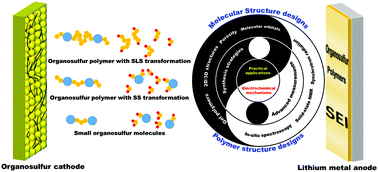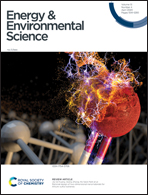Structure-related electrochemical performance of organosulfur compounds for lithium–sulfur batteries
Abstract
Lithium–sulfur batteries (Li–S batteries) are promising next-generation energy storage devices due to their high theoretical energy density, low cost, and environmental compatibility. When trying to convert experiment into practice, one finds that sulfur cathodes, especially a cyclic octasulfur cathode, and lithium metal anodes present several problems, including sulfur shuttling, the fact that S is an insulator, complex 16-electron reactions, and the formation of lithium dendrites. In recent years, organosulfur compounds have been extensively investigated for Li–S batteries in order to solve these problems and understand the electrochemical process during their redox reactions. This review aims to summarize the different functions of organosulfur compounds, and figure out a guideline for understanding and using them in Li–S batteries. The organosulfur compounds currently used as active materials are classified into three types based on their electrochemical behavior, and design principles of the molecular and polymer structures of organosulfur compounds are concluded. Based on these design principles, we summarize how to control their electrochemical performance, and suggest possible electrochemical mechanisms and other characteristics. Finally, we propose guidelines for the development of promising organosulfur compounds using emerging technologies, including advanced characterization techniques, innovative methods of synthesis of such compounds, and machine-learning techniques.



 Please wait while we load your content...
Please wait while we load your content...